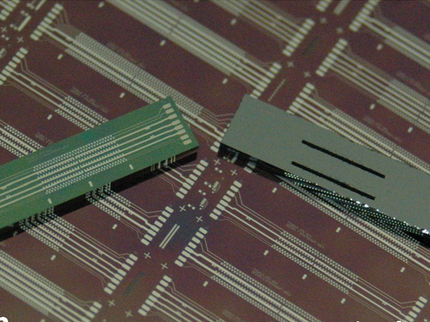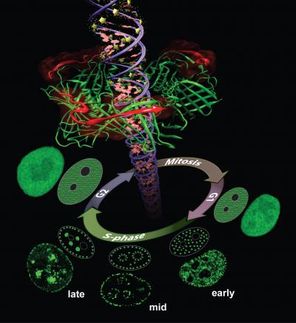Laboratory-on-a-chip technique simplifies detection of cancer DNA biomarkers
Cancer is the second leading cause of death in the U.S., making early, reliable diagnosis and treatment a priority for researchers. Genomic biomarkers offer great potential for diagnostics and new forms of treatment, such as immunotherapy. Miniaturized lab-on-chip approaches are prime candidates for developing viable diagnostic tests and instruments because they are small, need only limited test volumes, and can be cost-effective.
A team of scientists and engineers from the University of California, Santa Cruz and Brigham Young University have developed just such an approach capable of processing biomolecular samples from blood. Their method can analyze and identify multiple targets on a silicon-based molecular detection platform.
Laboratory-on-a-chip describes the miniaturization of laboratory functions such as blood testing on a chip. Instead of transferring relatively large (micro- to milliliters) samples between test tubes or using bulky analytical equipment, samples and reagents are handled on chip-scale devices with fluidic microchannels. This requires much smaller test volumes, and multiple functions can be integrated on a single device, improving speed, reliability and portability of these lab processes.
"Our approach uses optofluidic chips where both fluid processing and optical sensing are done on a chip, allowing for further miniaturization and performance enhancements of the chip system," said Holger Schmidt, a Narinder Kapany professor of electrical engineering at the University of California, Santa Cruz.
The entire process of testing was a challenge for the team, led by Schmidt and Aaron Hawkins, a physics professor at Brigham Young University. Each of the chips had to be developed and tested for multiple functions, from filtering of blood cells without clogging the filter to reliably analyzing optical data to create the right excitation patterns on the silicon chip. However, the process worked as envisioned, and the team was pleasantly surprised to see just how powerful the multi-spot optical excitation method actually was.
The next step to realizing the potential of this research is to move toward real clinical samples and to detect individual DNA biomarkers.
"We have shown single nucleic acid analysis in the context of on-chip Ebola detection and would like to transfer that to this application," said Schmidt.
Other goals for the team include increasing the speed of the analysis process, and integrating more optical elements on the chip. They also want to expand their capabilities to analyzing protein biomarkers in addition to nucleic acids and whole virus particles already demonstrated.
This research is expected to have a wide range of applications because the underlying principle of this kind of on-chip optical analysis and manipulation is very general.
"In the near term, we hope to build new diagnostic instruments for molecular diagnostics with applications in oncology and infectious disease detection, both viruses and (drug-resistant) bacteria," Schmidt said. "In addition, these chips could be very useful for fundamental research in molecular biology and other life sciences since they can provide analysis of single nano- and microparticles without the need for expensive equipment. And they require a relatively low amount of experimental skills."
Original publication
Hong Cai, Matthew Stott, Damla Ozcelik, Joshua W. Parks, Aaron R. Hawkins and Holger Schmidt; "On-chip wavelength multiplexed detection of cancer DNA biomarkers in blood"; Biomicrofluidics; 2016
Most read news
Original publication
Hong Cai, Matthew Stott, Damla Ozcelik, Joshua W. Parks, Aaron R. Hawkins and Holger Schmidt; "On-chip wavelength multiplexed detection of cancer DNA biomarkers in blood"; Biomicrofluidics; 2016
Topics
Organizations
Other news from the department science

Get the life science industry in your inbox
By submitting this form you agree that LUMITOS AG will send you the newsletter(s) selected above by email. Your data will not be passed on to third parties. Your data will be stored and processed in accordance with our data protection regulations. LUMITOS may contact you by email for the purpose of advertising or market and opinion surveys. You can revoke your consent at any time without giving reasons to LUMITOS AG, Ernst-Augustin-Str. 2, 12489 Berlin, Germany or by e-mail at revoke@lumitos.com with effect for the future. In addition, each email contains a link to unsubscribe from the corresponding newsletter.
Most read news
More news from our other portals
See the theme worlds for related content
Last viewed contents

What social distancing does to a brain - Have you recently wondered how social-distancing and self-isolation may be affecting your brain?
Ascertainment_bias
Limonene
Untethered_regimen
Radiation_burn
Sour_Cherry

METiS Joins the Roche Accelerator - Start-up combines cutting-edge AI data-driven algorithms, mechanism-driven quantum mechanics and molecular dynamics simulations
Hydrochlorothiazide
OSI_Pharmaceuticals























































